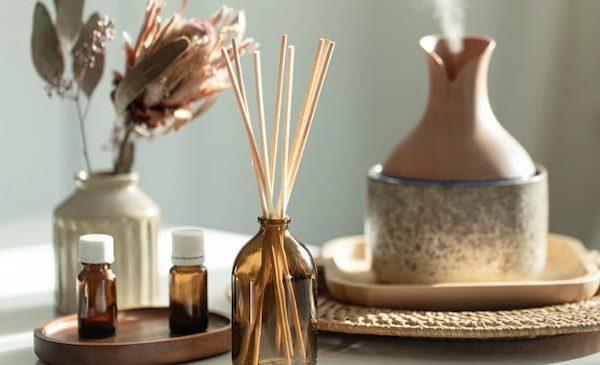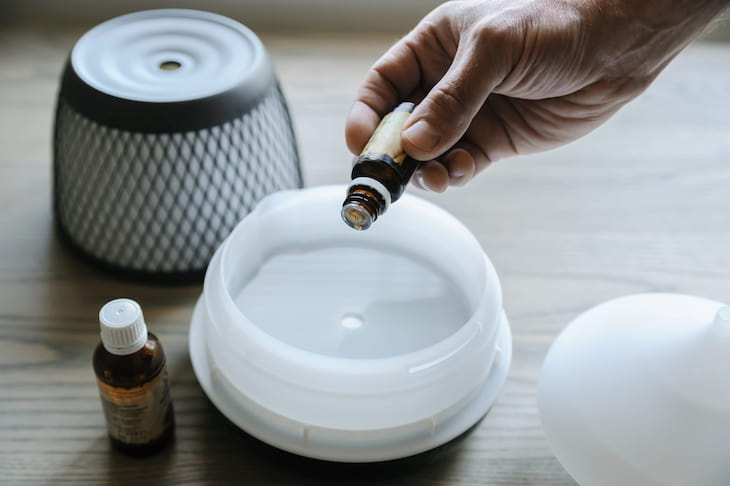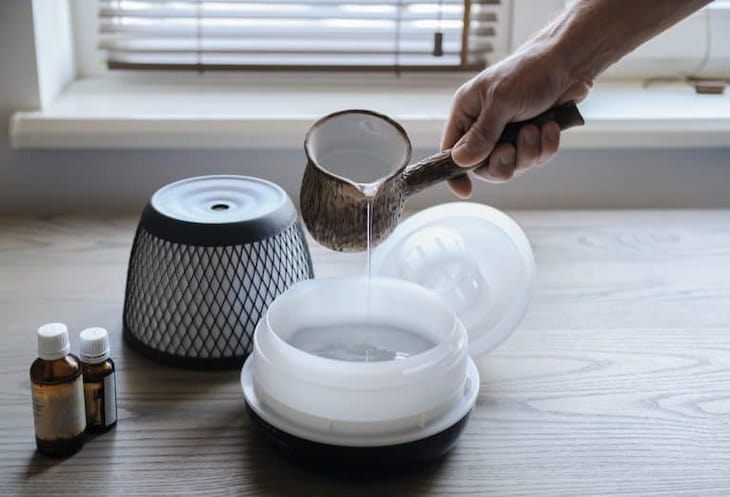20
Oct

Would you like to introduce some natural fragrance into your environment? One of the most practical and stylish ways to circulate the scent of essential oils is to use a diffuser. Whether you want to welcome visitors with a warm atmosphere, mask cooking odours, or simply enjoy pleasant scents during the day, this method can transform the atmosphere in your home.

When you start browsing essential oils, you will find yourself spoilt for choice. To pick the right option, you just need to follow your scent preference and the desired mood. Here are some top essential oils with diffuser picks broken down by scent type:
Lemon oil has a light, clean fragrance ideal for bathrooms and kitchens. It does especially well at eliminating bold cooking smells. Sweet orange offers a lively, inspiring scent ideal for living rooms and home offices, and grapefruit provides a sharp, invigorating aroma best suited for morning schedules. Bergamot is special because it marries citrus brightness with soft floral notes, so it’s useful in any space.
Eucalyptus has a powerful, spa-like scent that is loved by many, especially during the periods of seasonal change. Peppermint offers a cool, invigorating smell suitable for creating an alerting atmosphere in workplaces. Rosemary has a woody, herbaceous scent that works nicely with citrus essential oils and tea tree oil has a medicinal, clean scent that’s perfect for bathrooms.
Lavender is perhaps the most popular essential oil, with its classic floral scent without being overly sweet or perfume-y, ideal for bedrooms and relaxation rooms. Ylang ylang is an exotic, rich, floral smell that should be used sparingly or blended with other lighter oils. Geranium is rosy, rich and well-balanced, floral scented and will blend easily with many oils.
Cedarwood has a grounding, woody scent perfect for filling spaces on cool autumn and winter days. Sandalwood features a deep, sophisticated woody scent well-suited for meditation rooms or bedrooms. Frankincense has the resinous, slightly mystical aroma that’s been popular for literally thousands of years.
Cinnamon bark is excellent for producing a warm, comforting atmosphere that evokes holiday spices, but use it in moderation since it is extremely potent. Clove bud has a rich, spicy-sweet fragrance perfectly suited to autumn and winter months, while ginger offers a zesty, warming scent that provides depth to any fragrance mixture.
Once you’ve tried a few single essential oils with diffuser, experiment with blending your own fragrances. One trick is to blend oils from opposite categories: pair citrus with herbal (lemon and rosemary), floral with woody (lavender and cedarwood), or fresh with spicy (eucalyptus and ginger).
Start with a leading note (2-3 drops), add a complementary note (1-2 drops), and finish with an accent note (1 drop). Take note of your favourite combinations to refer back to them in the future.
Keep your oils in their dark glass bottles away from the sun and heat. Stored oils retain their fragrance strength for 1-2 years in most cases, but citrus oils are good for about 6-12 months.
When buying oils, ensure that the bottle states “100% pure essential oil” instead of “fragrance oil” or “perfume oil,” which are cheaper synthetic versions that can ruin diffusers. Although higher-quality oils are more expensive to buy, they’re more concentrated and tend to have a more natural scent than lower-priced ones.

From the common electric diffusers to full-blown contraptions with built-in diffuser reservoirs, you can find these devices in various shapes and sizes. Whichever option of essential oils and diffuser you choose, whether it’s classics like relaxing lavender and chamomile, the timeless frankincense, or one of the citrus or woody scents, the process is quite straightforward.
Start by reading your diffuser’s instructions, as water volume and oil recommendations vary by model. Most ultrasonic diffusers require you to fill the reservoir with clean, room-temperature water up to the fill line. Add 3-5 drops of essential oil for every 100ml of water. You may adjust the ratio based on your scent preference and room size, but it is best to start conservatively and add more if needed.
Set your diffuser on a stable, flat surface in a central, elevated location—like on a shelf or table where the mist can flow around. Avoid placing it right under an AC unit or next to an open window, or all that lovely scent will just be blown away. Put it a bit away from electronics and anything else that shouldn’t get damp.
Most diffusers have intermittent or continuous misting settings. Intermittent settings (30 seconds on and 30 seconds off) are usually better – it will make your oil go further and will continue to scent the room. Run it for 30-60 minutes in small rooms, or up to a few hours in large ones. You don’t need to run it all day to get good results.
This is the bit that some people neglect, but it’s important. After every use, dump out the remaining water and wipe down the interior with a soft cloth. About once a week, clean it properly by running it with water and a teaspoon of white vinegar for around 10 minutes, then rinse it out thoroughly. This prevents oils from accumulating and making your diffuser strange and gunky.
And that’s really all there is to it. Start with some of your favourite smells, experiment a bit, know how to properly use them and in no time your space will smell the way you’d like it to.